Introduction of Brazilian Red Bourbon Coffee Bean | past Life and present Life of the Family of Red bourbon Coffee Bean
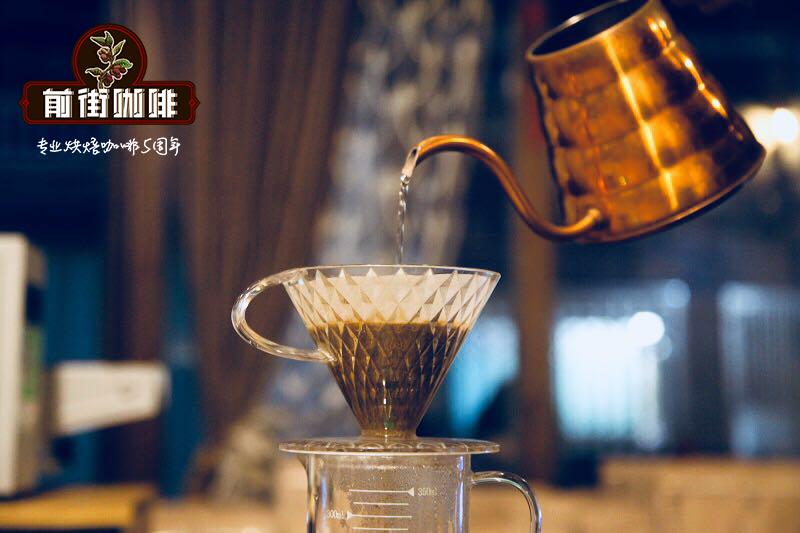
Brazil is the world's largest producer of coffee, with Brazilian boutiques and Brazilian mixed beans on the front street. Qianjie knows that many people think that Brazilian coffee beans are of poor quality, because many of them are used to match beans, but there is nothing absolute. Qianjie today will introduce a very high daily use of a kind of coffee beans-Brazilian red bourbon. This bean is used in the front street as Brazilian rations beans and Italian mix, that is, it can be used as hand brew and Italian coffee!
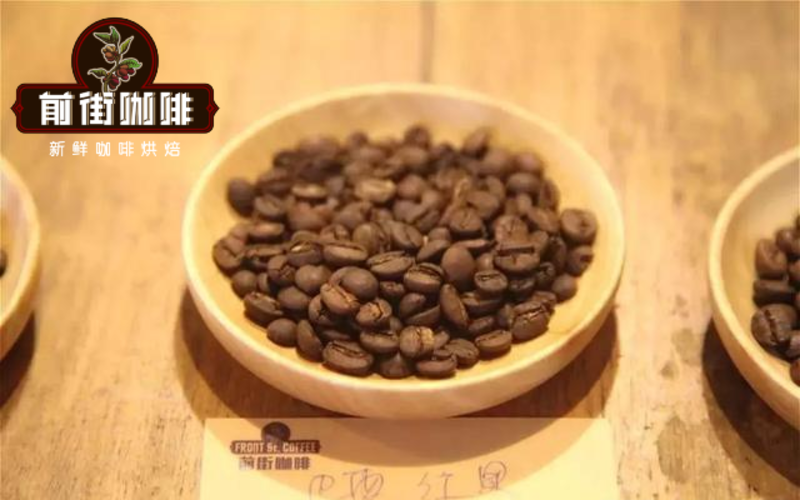
Brazil red bourbon half-sun
[country] Brazil Barsil
Red bourbon, Red Bourbon
[treatment] hand extraction, followed by half-sun treatment
[place of origin] South Minas
[altitude] 700m-1200m
[treatment method] semi-washing
[flavor] High sweetness, clean, supple, low acid value, tropical fruit aroma.
01 | Origin description
The hilly woodland of 700m-1200m in South Minas is the earliest coffee production area in Brazil. Due to the increase in labor costs, it is now mostly harvested mechanically, and it is also the earliest commercialized area of coffee. We can see that many large exporters are also here. Bahia, located in the north of Brazil, mainly produces washing Brazil, and Espiritu Santo, near the seaside, is the main export area of Brazilian Robusta varieties.
There are mainly two kinds of topography in Brazil, one is the Brazilian plateau above 500 meters above sea level, and the other is the Brazilian plain below 200 meters above sea level. The main cultivated and well-known variety is bourbon (including yellow bourbon, red bourbon, Pingdou Shan du Shi). The taste of Brazilian coffee is mainly characterized by low acidity, nutty flavor, balanced and moderate thickness. In the world of boutique coffee, Brazilian coffee is not outstanding, but Brazilian coffee is often used as a blending variety in Italian coffee. Because of the high degree of balance, it is often used by merchants as blue mountain flavor beans.
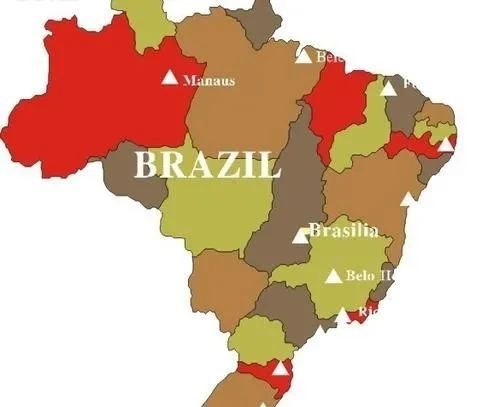
Bourbon species
Tell me briefly what bourbon is. Bourbon coffee was originally grown on the island of Reunion, which was also known as le Bourbon before 1789. Bourbon, the second species caused by the Typica mutation, is the oldest coffee variety in existence, and the green fruit appears bright red when it is ripe. After the red bourbon general coffee tree blossoms and bears fruit, the color change of the coffee fruit is: green > turn yellowish > turn slightly orange > turn mature red > turn more ripe dark red, so some people also call it [red bourbon], in fact, red bourbon, that is, what we call bourbon species. Bourbon planted at high altitude usually has a better aroma, while the acid is brighter and even tastes like red wine. Generally speaking, bourbon is a coffee tree that belongs to a branch of Arabica species, generally bearing red fruit, called red bourbon, in addition to yellow bourbon, orange bourbon, yellow bourbon relatively low yield, but better quality.
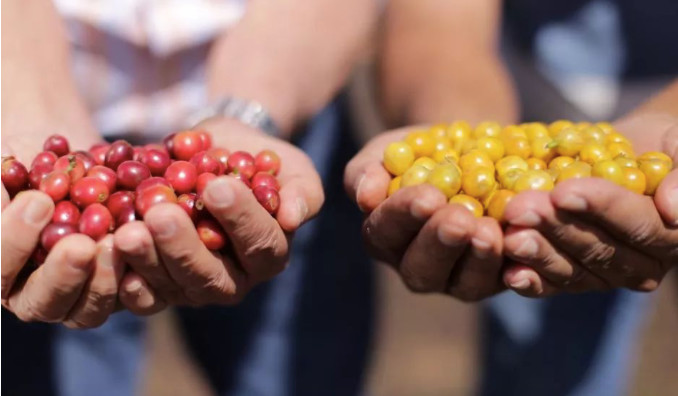
The propagation route of bourbon species
Introduced to Brazil in 1727 because of its low yield and easy to interfere with diseases, the bourbon species was introduced to Brazil around 1860 via Campinas in the south and rapidly expanded northward to other parts of South and Central America. In Latin America today, although most of the bourbon species have been basically replaced by their varieties (especially Caturra,Catuai and Mundo Novo, etc.), bourbon is still grown in El Salvador, Guatemala, Costa Rica, Peru and other countries. In Africa, French missionaries known as Spiritan (from the Holy Spirit) played an important role in the spread of the bourbon species. The first church was founded in Reunion in 1841 and a branch was established in Zanzibar in 1859, while from Zanzibar a branch was established in Bagamoyo (Bagamoyo, coast of Tanzania, then known as Tanganyika) and St. Augustine (Kikuyu, Kenya) in 1862, and a branch was established in Bura (Taita Hills, Kenya) in 1893. The establishment of each chapter was accompanied by the planting of coffee seeds from Reunion.
Seedlings cultivated by Bura in 1899 were brought to another French church in Santa Cruz (near Nairobi), introduced to the Kilimanjaro region of Tanzania in 1900, and distributed seeds to local residents who were willing to grow coffee. This is the origin of the so-called "missionary bourbon". Then the Kent species was introduced in 1920. Therefore, up to now, the coffee in Tanzania is mainly bourbon and Kent.
French island of Bourbon-1860 pointed Bourbon to New Caledonia Yemen-1732 round bourbon to British dependency St. Helena Island. -- round bourbon to Brazil in 1860. Bourbon to Rwanda, Kenya, Tanzania in 1900 and pointy bourbon to Colombia after 2000.
03 | introduction to the handling method
Semi-washing method: after picking coffee cherries, remove the immature fruit and foreign body through the sink, remove the skin and part of the pulp, and then use the pectin machine to remove the mucous membrane. The removal of mucous membrane helps to reduce the required sun drying time and reduce the risk of fermentation. This method is often used when the climatic conditions are not so ideal. If the air humidity is high, the climate is warm or there is rain, then there is a risk of mildew in the drying process. As a result, most of the washed beans used in commodity trade in Brazil are processed by semi-washing.
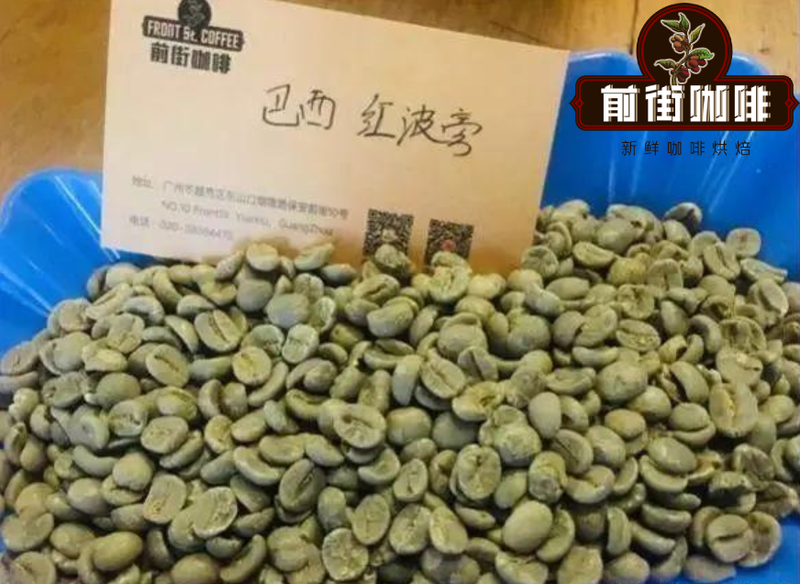
04 | Analysis of raw beans of Qianjie coffee
There are many kinds of coffee in Brazil, which are mainly treated by solarization, which are classified according to the name of the state of origin and the port of transport. Due to the scattered producing areas and uneven quality, the classification standard is not unified: NO.2~NO according to the number of sundries and NO.13~NO.19 according to the size of beans. The Brazilian grading system, which scores the proportion, size, flavor and taste of defects, is its own independent grading system, which is more complex than that from other countries. For example, the "Brasil Santos NY2 SC17/18 SS FC" NY2 classifies the proportion of defects: the higher the number, the greater the proportion of defects. The order is 2, 2, 3, 3, 3, 4... NY says it is based on the New York rating standard. SC 17A 18 represents the number of coffee beans. While SS FC (Strictly Soft and Fine Cup) represents flavor and taste, it is divided into two groups: first Strictly Soft, Soft, Softish, Hard, Hardish, Rioy/Rioysh, Rio second is Fine Cup and Good cup. Brazilian coffee is widely loved because of its high sweetness, cleanliness, softness, low acid value and wide use.
05 | Qianjie coffee roasting analysis roaster Yang family 600g semi-direct fire
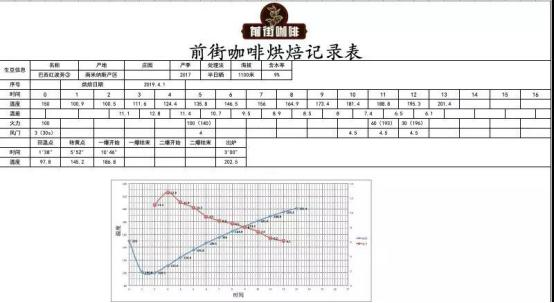
Brazilian coffee generally grows at an altitude of 1000-1300 meters above sea level, so its density is relatively low, the water content is moderate, the bean quality is soft, and the thickness from the bean surface to the bean core is thin, so it is not suitable for baking at too high temperature, so there will be a bitter taste. We choose the method of throwing beans over medium heat to keep the firepower to the dehydration stage, and fine-tune the caramelization reaction with the increase of temperature after the first explosion, which makes the caramelization reaction more fuller. After the semi-water washing and explosion, the temperature rises slowly, and the beans can be dropped when the second explosion is near. The furnace temperature is preheated to 200 degrees Celsius, fire is fired after the throttle is set at 3J30s, the firepower is adjusted to 160, the throttle is unchanged, the temperature recovery point is 30, keep the firepower, the grass smell disappears, the firepower is reduced to 130, and the throttle is opened to 4. At 168 degrees, the firepower was lowered again to 100.8 degrees 39. 00 after dehydration, the bean table appeared wrinkled and black markings, and the taste of toast changed to coffee, which was a prelude to an explosion. At 8: 00, 39: 00, 50 starts to explode, and all the throttle doors are open. After an explosion, the development time is 3 minutes and 10 seconds, and when it reaches 190C, the firepower drops to 50194 degrees, then to 30 degrees, and then to about 200degrees.
This is a flavor-balanced coffee with a typical Brazilian coffee style. The flavor of nuts and chocolate is outstanding and the acidity is low.
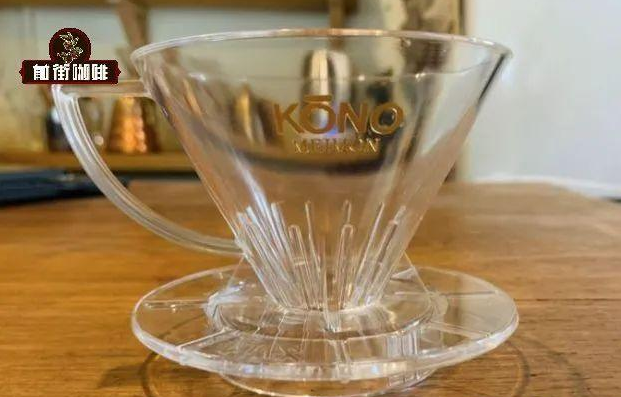
06 | data of coffee brewing in Qianjie
Recommended cooking method: hand flushing
Degree of grinding: 4 (Fuji R440)
Water temperature: 89 °C
V60 filter cup, 15 grams of powder, water temperature 90-91 degrees, grinding 3.5.The ratio of water to powder is close to 1, 15, 30 grams, steaming time is 30 seconds, section: water injection to 120ml cut off water, slow water injection to 225ml, that is, 30-120-75, the total extraction time is 2 minutes
Other trickle extraction suggestions: normal pressure, recommended grinding degree / water temperature 90 °C, Ailo pressure, recommended 2.5 grinding degree, water temperature 90 °C

[Italian # 2] Colombian and Brazilian blend has its own sweetness, some nuts, peach, almond flavor, caramel sweetness, chocolate silky, obvious sense of balance today. I tried 1.9 grind 21.5g powder extraction for the first time in a double-headed powder bowl. I found that there was too much powder and there was no liquid after 5 seconds. By reducing the amount of powder by 20.5g and keeping the grinding degree unchanged, I extracted 42g concentrate in a ratio of 1: 2 in 28 seconds.
Important Notice :
前街咖啡 FrontStreet Coffee has moved to new addredd:
FrontStreet Coffee Address: 315,Donghua East Road,GuangZhou
Tel:020 38364473
- Prev
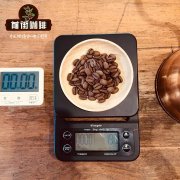
Geisha coffee beans the origin of geisha coffee Xiao Candle Manor is suitable for hand-brewed coffee beans
Professional coffee knowledge exchange more coffee bean information please follow the coffee workshop (Wechat official account cafe_style) Costa Rica Tarazu small Candle Manor Geisha washing Costa Rica Tarrazu La Candelilla Geisha washed production country: Costa Rica Costa Rica production area: Tara Pearl San Marcos de Tarrazu Manor / washing Factory: small Candle
- Next
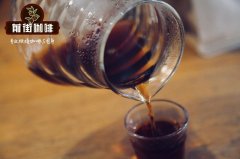
Differences in the flavor of PWN coffee from different producing areas _ is the price of Mantenin coffee beans expensive?
Professional coffee knowledge exchange more coffee bean information please follow the coffee workshop (Wechat official account cafe_style) transplanted Tibica to Indonesia from India at the end of the 17th century, after hundreds of years of cultivation, a variant of Tibica has been developed in Sumatra. It is smaller than the native species, but it retains the delicacy of Tiebika. Mantenin is produced in the surrounding mountains of Lake Toba (Lake Toba), the geography of the lake.
Related
- Detailed explanation of Jadeite planting Land in Panamanian Jadeite Manor introduction to the grading system of Jadeite competitive bidding, Red bid, Green bid and Rose Summer
- Story of Coffee planting in Brenka region of Costa Rica Stonehenge Manor anaerobic heavy honey treatment of flavor mouth
- What's on the barrel of Blue Mountain Coffee beans?
- Can American coffee also pull flowers? How to use hot American style to pull out a good-looking pattern?
- Can you make a cold extract with coffee beans? What is the right proportion for cold-extracted coffee formula?
- Indonesian PWN Gold Mandrine Coffee Origin Features Flavor How to Chong? Mandolin coffee is American.
- A brief introduction to the flavor characteristics of Brazilian yellow bourbon coffee beans
- What is the effect of different water quality on the flavor of cold-extracted coffee? What kind of water is best for brewing coffee?
- Why do you think of Rose Summer whenever you mention Panamanian coffee?
- Introduction to the characteristics of authentic blue mountain coffee bean producing areas? What is the CIB Coffee Authority in Jamaica?

